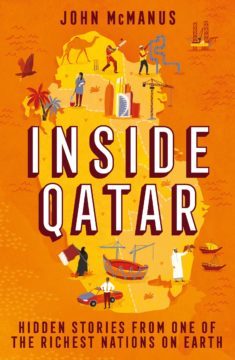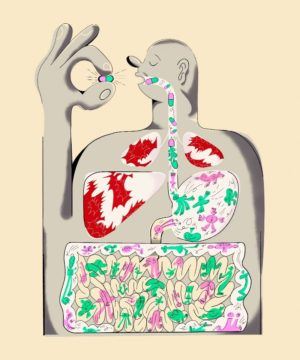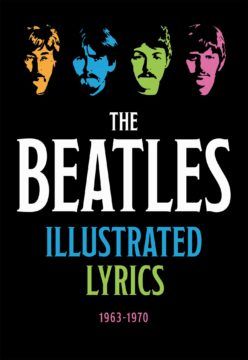Lea Booth in Quillette:
 Germans call it Energiewende (“energy transition”), and they aim to decarbonize their economy and lead the world by replacing their fossil fuel and nuclear plants with renewable energy. Germany is the first major nation to undertake such an effort, and, as hoped for, their early adoption of renewables has catalyzed a spectacular drop in costs for those technologies. A reporter summed up German attitudes towards the Energiewende, writing, “Germans would then at last feel that they have gone from being world-destroyers in the 20th century to world-saviors in the 21st.”
Germans call it Energiewende (“energy transition”), and they aim to decarbonize their economy and lead the world by replacing their fossil fuel and nuclear plants with renewable energy. Germany is the first major nation to undertake such an effort, and, as hoped for, their early adoption of renewables has catalyzed a spectacular drop in costs for those technologies. A reporter summed up German attitudes towards the Energiewende, writing, “Germans would then at last feel that they have gone from being world-destroyers in the 20th century to world-saviors in the 21st.”
The Energiewende gained legislative support in 2010, and Germany spent nearly 202 billion euros on renewable energy projects from 2013 to 2020. Since 2010, the share of German electricity generation that has come from solar and wind power has risen from 8 percent to 31 percent, no small feat.
Yet Russia’s invasion of Ukraine has laid bare critical weaknesses in German energy policy. Before the war in Ukraine, Germany received 55 percent of its natural gas imports from Russia. While that percentage has fallen since the war began, the European Union chose not to ban Russian gas imports because gas is so crucial to EU nations like Germany. Unsurprisingly, Putin has been using Russia’s gas flows to exert influence over Germany and the EU.
More here.

 Published in 1953, The Captive Mind remains possibly the best book ever written about the lure and trap of totalitarian ideology. In his riveting collection of linked essays, the great poet Czesław Miłosz probed the motivations of Polish writers and intellectuals (Miłosz, at one time, included) who joined the Communist regime after World War II. The rewards of the book begin with its epigraph, which Miłosz attributes to “An Old Jew of Galicia”:
Published in 1953, The Captive Mind remains possibly the best book ever written about the lure and trap of totalitarian ideology. In his riveting collection of linked essays, the great poet Czesław Miłosz probed the motivations of Polish writers and intellectuals (Miłosz, at one time, included) who joined the Communist regime after World War II. The rewards of the book begin with its epigraph, which Miłosz attributes to “An Old Jew of Galicia”: I
I In Arabia Through the Looking Glass, when he wasn’t comparing everything to Alice in Wonderland, Jonathan Raban likened his experiences in the Gulf States at the height of the 1970s oil boom to passing through a ‘time loop’ into Britain at the heyday of the Industrial Revolution. Today – in polite academic circles, at least – it would constitute a major faux pas to compare the societies of the Middle East with those at some earlier stage of Western historical development. Yet, forty years on, one gains a strikingly similar impression from John McManus’s picture of life in 21st-century Qatar, from the outsized ambition, the extraordinary rate of economic growth and the transformation of the urban environment to the dreadful working conditions, the open racial hierarchies and the persistence of traditional rentier elites. To venture ‘inside Qatar’ in 2022, as McManus puts it, is to get a ‘glimpse of life at the coalface of globalisation’.
In Arabia Through the Looking Glass, when he wasn’t comparing everything to Alice in Wonderland, Jonathan Raban likened his experiences in the Gulf States at the height of the 1970s oil boom to passing through a ‘time loop’ into Britain at the heyday of the Industrial Revolution. Today – in polite academic circles, at least – it would constitute a major faux pas to compare the societies of the Middle East with those at some earlier stage of Western historical development. Yet, forty years on, one gains a strikingly similar impression from John McManus’s picture of life in 21st-century Qatar, from the outsized ambition, the extraordinary rate of economic growth and the transformation of the urban environment to the dreadful working conditions, the open racial hierarchies and the persistence of traditional rentier elites. To venture ‘inside Qatar’ in 2022, as McManus puts it, is to get a ‘glimpse of life at the coalface of globalisation’. Flora Bigelow Dodge had not traveled to Sioux Falls, South Dakota, in January 1903 for the same reason so many women of her acquaintance had. She did not do anything for the same reason other women did—at least not if you believed the newspapers. A fixture in the society pages, Flora was the “most daring, most original, cleverest woman in New York.” She was a wonderful musician, a graceful dancer, an expert horsewoman, and a captivating storyteller, an author of plays and short stories. She was “both courageous and imaginative.” She was witty, ambitious, generous, and beautiful, a woman of “unusual individuality” with a retinue of admirers.
Flora Bigelow Dodge had not traveled to Sioux Falls, South Dakota, in January 1903 for the same reason so many women of her acquaintance had. She did not do anything for the same reason other women did—at least not if you believed the newspapers. A fixture in the society pages, Flora was the “most daring, most original, cleverest woman in New York.” She was a wonderful musician, a graceful dancer, an expert horsewoman, and a captivating storyteller, an author of plays and short stories. She was “both courageous and imaginative.” She was witty, ambitious, generous, and beautiful, a woman of “unusual individuality” with a retinue of admirers. Zion Levy remembers the excitement that he and his daughter felt while poring over body scans in 2019, watching small black dots, representing melanoma metastases, shrink away and eventually vanish. They weren’t Levy’s scans. He didn’t even know who the scans came from, but he did share a connection with them.
Zion Levy remembers the excitement that he and his daughter felt while poring over body scans in 2019, watching small black dots, representing melanoma metastases, shrink away and eventually vanish. They weren’t Levy’s scans. He didn’t even know who the scans came from, but he did share a connection with them. Published by Thunder Bay Press, The Beatles Illustrated Lyrics: 1963-1970 offers an attractive, if strangely incomplete, collection of the lyrics that John, Paul, George, and (very rarely) Ringo produced during their 1960s heyday. The brevity of the Beatles’ career—seven short years from “Please Please Me” to “The Long and Winding Road”—remains the most mystifying element of the band, of how so much music poured out of the band in a remarkably brief amount of time. The Beatles Illustrated does not offer any answers or provide any new insight on the Fab Four’s magic—the commentary is limited to Steve Turner’s one-page introduction—but instead captures the bulk of the Beatles’ lyrics alongside some great photos of the band and illustrations that nicely compliment the songs.
Published by Thunder Bay Press, The Beatles Illustrated Lyrics: 1963-1970 offers an attractive, if strangely incomplete, collection of the lyrics that John, Paul, George, and (very rarely) Ringo produced during their 1960s heyday. The brevity of the Beatles’ career—seven short years from “Please Please Me” to “The Long and Winding Road”—remains the most mystifying element of the band, of how so much music poured out of the band in a remarkably brief amount of time. The Beatles Illustrated does not offer any answers or provide any new insight on the Fab Four’s magic—the commentary is limited to Steve Turner’s one-page introduction—but instead captures the bulk of the Beatles’ lyrics alongside some great photos of the band and illustrations that nicely compliment the songs. With its recent
With its recent  Anita’s case was far from unique. According to hospital records, the women’s ward in Herat saw 900 such cases that April. In 2021, the facility recorded 12,678 cases, up from 10,800 cases in 2020.
Anita’s case was far from unique. According to hospital records, the women’s ward in Herat saw 900 such cases that April. In 2021, the facility recorded 12,678 cases, up from 10,800 cases in 2020. Suppose that I am polyamorous and that my mother disapproves. She tolerates my love life but thinks it’s wrong that I have not one partner but two. What her half-accepting, half-critical attitude reveals is a duality at the heart of toleration, an ambivalence that is beautifully captured by the British philosopher
Suppose that I am polyamorous and that my mother disapproves. She tolerates my love life but thinks it’s wrong that I have not one partner but two. What her half-accepting, half-critical attitude reveals is a duality at the heart of toleration, an ambivalence that is beautifully captured by the British philosopher  t was on a train journey, from Richmond to Waterloo, that
t was on a train journey, from Richmond to Waterloo, that  If you don’t suffer from migraine headaches, you probably know at least one person who does. Nearly
If you don’t suffer from migraine headaches, you probably know at least one person who does. Nearly  Anders Åslund, Robert D. Atkinson, Scott K.H. Bessent, Lorenzo Bini Smaghi, Josef Braml, Patrick M. Cronin, Mansoor Dailami, John M. Deutch, Mohamed A. El-Erian, Gabriel J. Felbermayr, Gary Clyde Hufbauer, Harold James, Michael C. Kimmage, Gary N. Kleiman, James A. Lewis, Jennifer Lind, Robert A. Manning, Ewald Nowotny, Thomas Oatley, William A. Reinsch, Jeffrey D. Sachs, Daniel Sneider, Atman Trivedi, Edwin M. Truman, Daniel Twining, Nicolas Véron, and Marina v N. Whitman offer views in The International Economy:
Anders Åslund, Robert D. Atkinson, Scott K.H. Bessent, Lorenzo Bini Smaghi, Josef Braml, Patrick M. Cronin, Mansoor Dailami, John M. Deutch, Mohamed A. El-Erian, Gabriel J. Felbermayr, Gary Clyde Hufbauer, Harold James, Michael C. Kimmage, Gary N. Kleiman, James A. Lewis, Jennifer Lind, Robert A. Manning, Ewald Nowotny, Thomas Oatley, William A. Reinsch, Jeffrey D. Sachs, Daniel Sneider, Atman Trivedi, Edwin M. Truman, Daniel Twining, Nicolas Véron, and Marina v N. Whitman offer views in The International Economy: